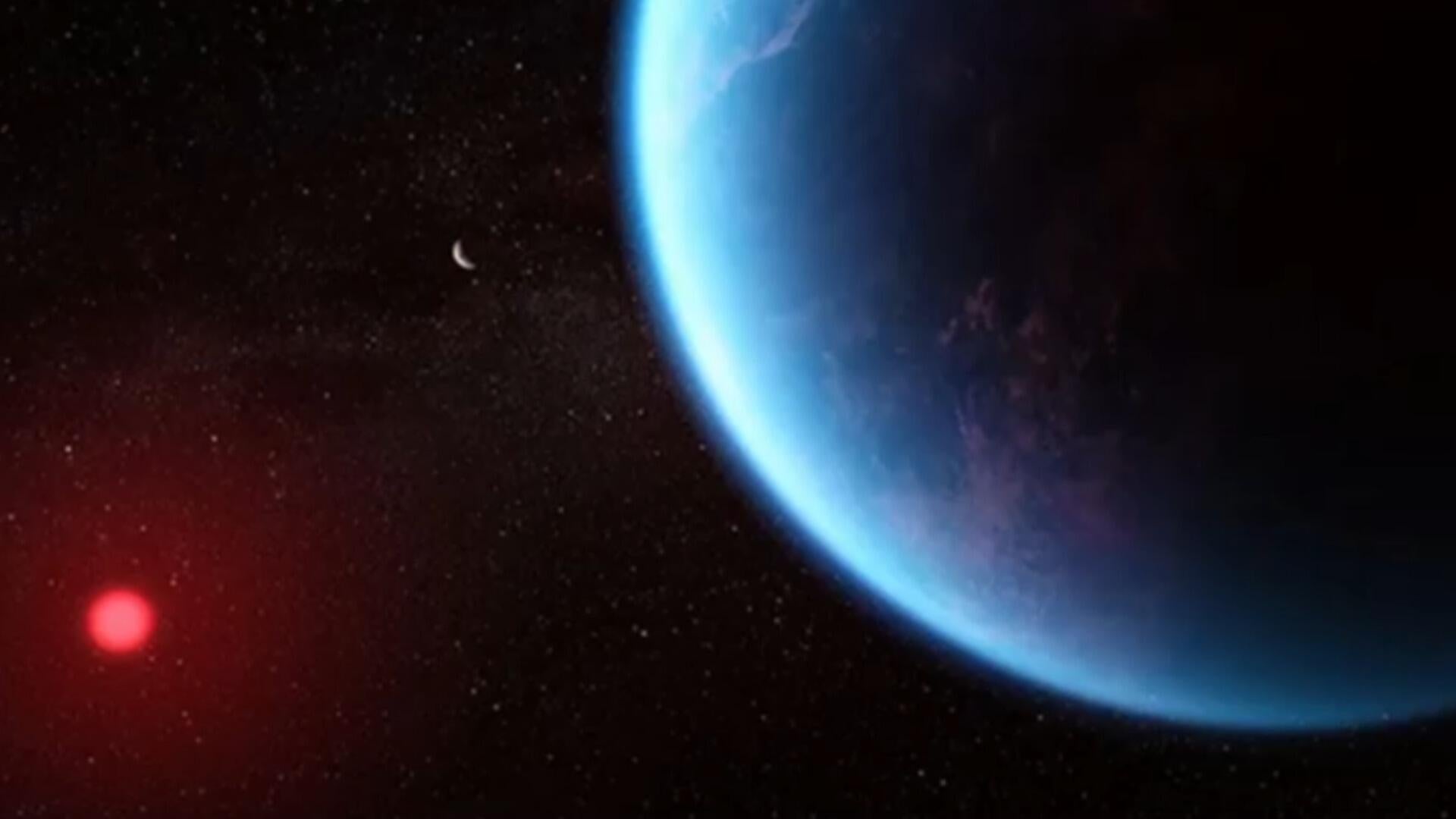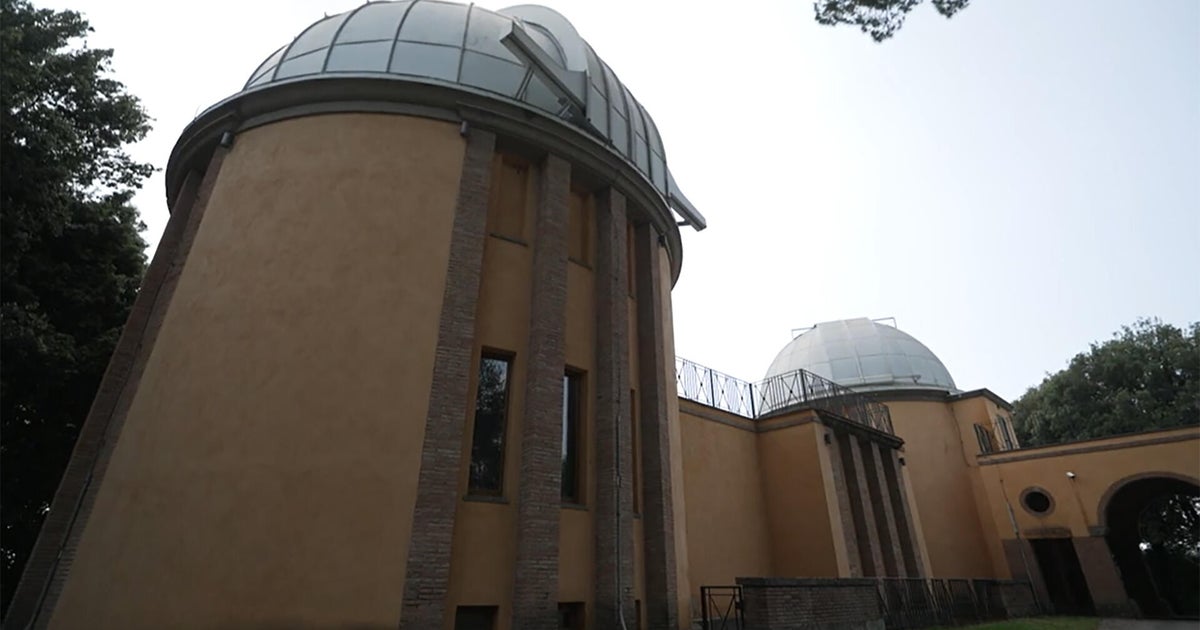Astronomer connected caller grounds pointing to beingness

Astronomers announced Wednesday they person discovered a monolithic satellite orbiting a tiny star, a bizarre pairing that has stumped scientists.
Most of the stars crossed the Milky Way are tiny reddish dwarfs similar TOI-6894, which has lone 20% the wide of our sun.
It had not been thought imaginable that specified puny, anemic stars could supply the conditions needed to signifier and big immense planets.
But an planetary squad of astronomers person detected the unmistakable signature of a state elephantine satellite orbiting the undersized TOI-6894, according to a study successful the diary Nature Astronomy. This makes the prima the smallest prima yet known to big a state giant.
The satellite has a somewhat larger radius than Saturn, but lone fractional its mass. It orbits its prima successful a small implicit 3 days.
 Artist's content of the recently discovered elephantine satellite - TOI-6894 b orbiting astir a 0.2 star wide big star.
University of Warwick/Mark Garlick
Artist's content of the recently discovered elephantine satellite - TOI-6894 b orbiting astir a 0.2 star wide big star.
University of Warwick/Mark Garlick
The astronomers discovered the satellite erstwhile searching done much than 91,000 low-mass reddish dwarfs observed by NASA's TESS abstraction telescope. Its beingness was past confirmed by ground-based telescopes, including Chile's Very Large Telescope.
"The information that this prima hosts a elephantine satellite has large implications for the full fig of elephantine planets we estimation beryllium successful our galaxy," survey co-author Daniel Bayliss of the UK's Warwick University said successful a statement.
Another co-author, Vincent Van Eylen, of University College London, said it was an "intriguing discovery."
"We don't truly recognize however a prima with truthful small wide tin signifier specified a monolithic planet!" helium said. "This is 1 of the goals of the hunt for much exoplanets. By uncovering planetary systems antithetic from our star system, we tin trial our models and amended recognize however our ain star strategy formed."
Planet is unusually cold
The astir salient mentation for however planets signifier is called halfway accretion.
The process begins erstwhile a ringing of state and particulate — called a protoplanetary disc — which surrounds a recently formed prima builds up into a planetary core. This halfway attracts much state that forms an atmosphere, yet snowballing into a state giant.
Under this theory, it is hard for low-mass stars to big elephantine planets due to the fact that determination is not capable state and particulate to statesman gathering a halfway successful the archetypal place.
A rival mentation proposes that these planets alternatively signifier erstwhile their protoplanetary disc becomes gravitationally unstable and breaks up, with the collapsing state and particulate forming a planet.
However neither mentation seems to explicate the beingness of the recently discovered planet, TOI-6894b, the researchers said.
The satellite besides interests scientists due to the fact that it is strangely cold.
Most of the state giants discovered extracurricular our star strategy truthful acold person been what are known arsenic "hot Jupiters," wherever temperatures soar good implicit 1,000 degrees Celsius. But the recently discovered satellite appears to beryllium nether 150C, the researchers said.
"Temperatures are debased capable that atmospheric observations could adjacent amusement america ammonia, which would beryllium the archetypal clip it is recovered successful an exoplanet atmosphere," said survey co-author Amaury Triaud of Birmingham University.
The James Webb abstraction telescope is scheduled to crook its almighty regard toward the satellite successful the adjacent year, which could assistance uncover immoderate much mysteries of this unusual planet.
Recent cosmic discoveries
The spotting of the elephantine satellite orbiting the undersized prima marks the latest successful a drawstring of caller celestial discoveries.
Last month, a U.S.-based trio hunting the elusive "Planet Nine" said they alternatively stumbled connected what appears to beryllium a new dwarf planet successful the star system's outer reaches. Named 2017 OF201, the caller entity is astir 430 miles across, according to a preprint study, making it 3 times smaller than Pluto.
Also successful May, an planetary squad reported that a newly recovered celestial object — possibly a star, brace of stars oregon thing other wholly — is emitting X-rays astir the aforesaid clip it's shooting retired vigor waves.
Meanwhile, scientists announced precocious that a caller planetarium amusement astir the Milky Way helped them unlock 1 of the star system's galore secrets. Experts astatine the American Museum of Natural History successful New York were fine-tuning a country astir the Oort Cloud that's acold beyond Pluto. Scientists person ne'er glimpsed this region, but erstwhile depository experts projected their country onto the planetarium dome, created utilizing simulation data, they saw a spiral shape.
Scientists had agelong thought the Oort Cloud was shaped similar a sphere oregon flattened shell, warped by the propulsion and propulsion of different planets and the Milky Way itself. The planetarium amusement hinted that a much analyzable signifier could prevarication inside.
 This representation provided by the American Museum of Natural History shows a caller planetarium amusement showing a backwards S-shaped spiral successful what's known arsenic the Oort Cloud acold beyond Pluto.
AP
This representation provided by the American Museum of Natural History shows a caller planetarium amusement showing a backwards S-shaped spiral successful what's known arsenic the Oort Cloud acold beyond Pluto.
AP
The Associated Press contributed to this report.








 English (US) ·
English (US) ·